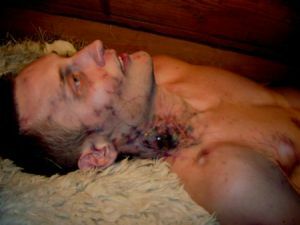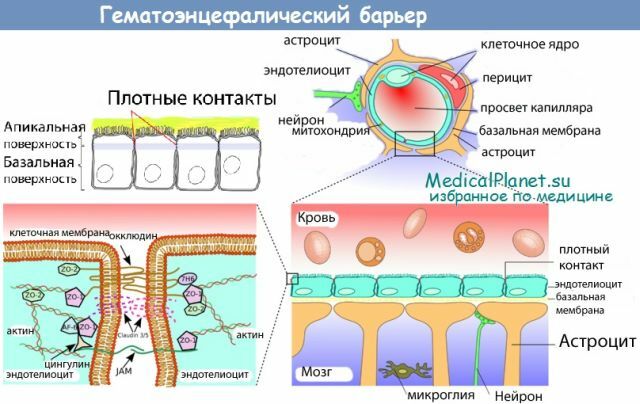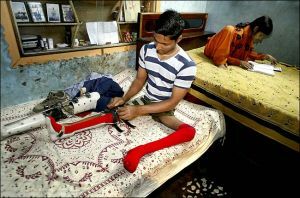 Poliomyelitis is the high-risk disease , in which the gray matter of the spinal cord is affected. The disease can lead to paralysis in a few hours.
Poliomyelitis is the high-risk disease , in which the gray matter of the spinal cord is affected. The disease can lead to paralysis in a few hours.
In the risk group, mainly children under 5 years of age, but rarely sick adults, and in extremely severe forms.
The disease is seasonal in nature - its peak falls between August and October. In most cases, the disease is asymptomatic or in the so-called erased form.
But if the virus penetrates into the central nervous system( CNS), then it destroys the motor neurons , which leads to irreversible changes in the form of muscle paralysis, for which this nerve was responsible.
To date, thanks to the efforts of the international community, the number of countries where the virus raged has decreased from 125( 1988) to 3( 2014) - Afghanistan, Pakistan and Nigeria.
Quantitatively, the progress looks like this: in 1988 there were more than 350,000 cases of the disease( and at least 17,5 thousand deaths), in 2013 - only 406( from 10 to 21 deaths).
Contents of
Contents of
- The causes of polio
- The classification of the disease
- Types of pathology
- The severity of the disease
- By the nature of the
- The clinical picture
- Symptoms and signs of poliomyelitis in children and adults
- Vaccination
- Video: Complication after vaccination against poliomyelitis
Polio causes
Poliomyelitis is primarilydisease of dirty hands.
The main ways to penetrate the infection may be :
- airborne pathway;

- non-observance of personal hygiene rules - use of the patient's utensils, or getting his discharge into the hands and other parts of the body of healthy children;
- through food products - the virus is quite resistant to the external environment, it can keep its virulence in water, milk on the surface of vegetables for several months.
At the same time, it is extremely sensitive to various disinfectants or boiling.
Classification of the disease
Classify the disease in 3 directions.
Types of pathology
Allocate:
- typical - with CNS involvement there are two types of nonparalytic - secrete a meningic disease - the disease proceeds according to the type of serous meningitis and abortive, which affects the mucous membranes of the mouth, intestines, nasopharynx, associated with weakness in the whole body and fever;this type of poliomyelitis in most cases ends in complete recovery;
- paralytic - muscle paralysis can persist for a long time, until the end of life;
- atypical passes in an asymptomatic( erased) form and for a long time the disease does not manifest itself, which is more dangerous for the body, since no measures are taken to treat the patient.
 What you need to know before taking Klopiksol - instructions for use, reviews of doctors and patients, medicine analogs and other relevant data.
What you need to know before taking Klopiksol - instructions for use, reviews of doctors and patients, medicine analogs and other relevant data. If the diagnosis is discirculatory encephalopathy 1 degree - treatment should be started as early as possible and complications can be avoided.
The severity of the disease
In severity - light, medium and heavy forms, the main measures are the intoxication of the body and the severity of motor disorders.
By the nature of the flow
Allocate:
- smooth - goes without sudden changes for the worse;
- Acute - occurs with manifestations of chronic diseases, complications in the form of concomitant infections and other are possible, accordingly such a nature of the disease is more dangerous.
Clinical picture of
What happens when a virus penetrates the human body?
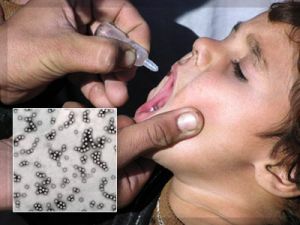 The virus enters the body through the mouth or intestine , and in the beginning it does not manifest itself at all - the incubation period lasts from 4 days to 9-11( in most cases) is occasionally prolonged to 21 days, at this time the virus multiplies in tonsils, intestines, lymph nodes located in different parts of the body, then penetrates into the blood.
The virus enters the body through the mouth or intestine , and in the beginning it does not manifest itself at all - the incubation period lasts from 4 days to 9-11( in most cases) is occasionally prolonged to 21 days, at this time the virus multiplies in tonsils, intestines, lymph nodes located in different parts of the body, then penetrates into the blood.
At this stage, it is possible to penetrate the virus into the central nervous system, with the defeat of motor cells located in the anterior horns of the spinal cord and the destruction of the cells of the nuclei of the cranial nerves.
If there are no characteristic symptoms of poliomyelitis, infection can be detected by using laboratory tests.
Symptoms and signs of poliomyelitis in children and adults
There are four stages of the disease and each stage of poliomyelitis has its symptoms and symptoms:
- Preparative , which lasts from 3 to 5 days and the main symptoms are fever, headaches, diarrhea attacks, orconstipation, nausea, runny nose and sore throat. Many believe that this is the flu or a similar infection and treat without consulting a doctor. At some point, the symptoms may disappear, but after a while there is a worsening of the condition, which is accompanied by increased pain in the limbs, back and head. Some patients experience confusion.
- Paralytic - lasts from several days to two weeks, with paralysis developing in just a couple of hours. It is accompanied by a fall in muscle tone, a decrease in the patient's motor activity, in some before complete immobility. The shock is most often exposed to the legs, but occasionally the muscles of the trunk and neck are affected. Interestingly, muscular pains are localized in paralyzed muscles.
- Recovery - lasts from several months to several years. A rapid rate of recovery of mobility is characteristic at the beginning, with a subsequent slowdown in recovery.
- The stage of residual phenomena manifests itself in the form of muscle atrophy, deformation of the trunk and paralysis of the limbs.
Vaccination of
The most effective way to treat this disease is to prevent it with a vaccine.
Babies are vaccinated in several stages:
- vaccine with inactivated virus at intervals of 1.5 months at 3, 4.5 and 6 months intramuscularly;
- vaccine with a weakened virus - used at the age of 18 months, the next inoculation after 45 days and the last in 14 years.
One chance out of 2.5 million vaccinated children, and then this is provided there are big problems in the baby's immune system. Remember that if your child has 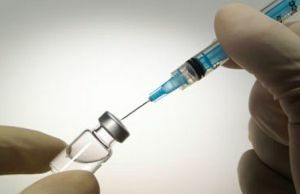 with an adult polio, then he is likely to remain a cripple for the rest of his life.
with an adult polio, then he is likely to remain a cripple for the rest of his life.
No less than , the preventive measures of are related to the maintenance of dishes, toys, linen, clothes and other household items on which the virus can get in a proper cleanliness.
If the child is in contact with the patient, he is placed in quarantine for a period of up to 3 weeks, but not less than 15 days.
Get in time and be well in time.
Video: Complication after vaccination against poliomyelitis
Vaccination of newborns is a serious crime, because the child's body can not get rid of poisons as quickly as an adult's body. Why should you refrain from vaccination before 5 years.


